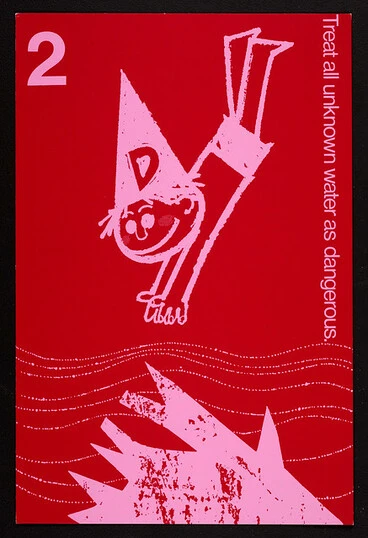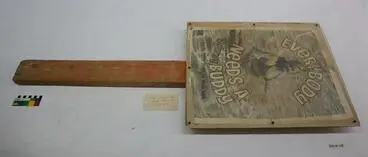Water Safety
A DigitalNZ Story by National Library Services to Schools
As an island nation, water sports are very popular in New Zealand. This story covers various aspects of water safety including swimming, boating, and fishing.
Always be prepared. Watch out for yourself and others as well as rips and other hazards in the water.
Archives New Zealand Te Rua Mahara o te Kāwanatanga
BACKGROUND
New Zealand has thousands of kilometres of coastline, and many lakes and rivers that make water sports like sailing, diving, fishing and swimming very popular activities. This makes water safety measures and rules all the more important. Water sports should be an enjoyable activity without injury or loss of life.
This story on water safety contains the following:
- Safety while swimming
- Safety while fishing
- Safety while boating
- Keeping us safe on water
- Lifeguards
- Learning to swim
- Water safety signs
- Beach flags
- Life jackets
- Sunscreen
- Quick facts
- Glossary
- Bibliography
- Supporting resources
- Teaching and learning resources
- A gallery of images on water safety
Don’t Show Off, You Endanger Yourself As Well As Others.
Archives New Zealand Te Rua Mahara o te Kāwanatanga
SAFETY WHILE SWIMMING
Know before you go - the Water Safety Code from Water Safety New Zealand has 4 simple safety rules to be familiar with to stay safe:
1. Be prepared
- Learn water safety skills - akona te kauhoe.
- Set rules for being safe in the water including safe play.
- Always use safe and correct equipment including lifejackets and know the weather and water conditions before you get in.
- Be alert to changing marine conditions.
2. Watch out for yourself and others
- Adults - always actively supervise children and keep children under five years old within arm's reach at all times.
- Swim with others and in areas where lifeguards are present. Don't swim alone
- Never go diving or fishing for kai alone or with a medical condition. If you get into trouble there's no one to help.
3. Be aware of dangers
- Check for safety signs, warning flags, currents and rips.
- Enter shallow and unknown water feet first.
- It may be easy getting into the water, but can you get out?
- Your clothing in the water may drag you down.
- DO NOT enter the water after drinking alcohol or taking drugs.
4. Know your limits
- Challenge yourself within your physical limits and experience.
- Think about what you can and can't do in the water.
- Being in the water will make you tired. Get out before you've reached your limit. Coldwater will make it worse.
- Always know that the weather or water conditions are stronger than you.
- Learn safe ways of rescuing others without putting yourself in danger. Throw something into the water such as a chilly bin or plastic bottles for buoyancy. If you throw a rope, lie down on your stomach to make the rescue.
The Loss Of A Lilo Is Not Worth Your Life, Let It Float Away
Archives New Zealand Te Rua Mahara o te Kāwanatanga
Cinderella, 'Take Care in Rivers'
Museum of New Zealand Te Papa Tongarewa
Brown Owl School 1980; Swimming; Standard 1 and 2
Upper Hutt City Library
Swimming in Lake Rotoiti
Auckland Libraries
Cinderella, 'don't go in alone'
Museum of New Zealand Te Papa Tongarewa
Fun in the pond, East Tamaki, 1960s
Auckland Libraries
SAFETY WHILE FISHING
Recreational sea fishing and freshwater fishing are two popular summer activities in New Zealand. Children and adults love to take their fishing rods and nets down to the beach, or river to catch some fish.
Water Safety New Zealand has some tips to make fishing safe and enjoyable:
- Learn water survival skills – if you fall in, you have a higher chance of surviving
- Check the marine weather forecast including the swell, tide and wind strength and direction
- Get to know the area you will be fishing, listen to advice and obey all warning signs
- Leave detailed information – tell someone responsible where you are going and when you are due to return.
- Never fish alone, make sure you always take a buddy with you
- Take and wear a lifejacket
- Take at least two methods of communication, such as mobile phone and VHF radio
When Fishing Off Rocks Watch For Freak Waves And Slippery Rocks
Archives New Zealand Te Rua Mahara o te Kāwanatanga
Maori children by a catch of trout
Alexander Turnbull Library
Kids fishing with bait
Manatū Taonga, the Ministry for Culture and Heritage
Children fishing from Days Bay Wharf - Photograph taken by Ian Mackley
Alexander Turnbull Library
Teaching card, children going fishing
MTG Hawke's Bay
Four children hold up kahawai caught at Queens Wharf, Wellington - Photograph taken by Ross Giblin
Alexander Turnbull Library
SAFETY WHILE BOATING
While boating with friends and family is a fun-filled activity, it is important that to prepare your boat, do safety checks and understand the rules to keep yourself and everyone else safe while on the water.
The Boating Safety Code from Maritime New Zealand has key messages to keep boating safe.
- Wear your lifejacket
- Take two waterproof ways to call for help
- Check the marine weather forecast
- •Avoid alcohol
- Be a responsible skipper.
Check That Homeworthy Rafts Or Boats Are Seaworthy
Archives New Zealand Te Rua Mahara o te Kāwanatanga
Bottoms up!
Auckland War Memorial Museum Tāmaki Paenga Hira
Child playing in water, with boat
Museum of New Zealand Te Papa Tongarewa
Children in dinghy, Manurewa, 1978
Auckland Libraries
KEEPING US SAFE ON WATER
LIFEGUARDS
In 2005 the national organisation, Surf Life Saving New Zealand (SLSNZ), co-ordinated the activities of 71 clubs in nine districts, with a total membership of nearly 13,000. It is a member of the International Life Saving Federation. As well as training lifeguards, who must obtain the Surf Lifeguard award, and juniors (known as ‘nippers’), the clubs offer water safety education programmes for school children.
Source: Surf lifesaving today — Lifesaving and surfing, Te Ara — The Encyclopedia of New Zealand.
Lifeguards are community heroes. They are trained rescuers and expert swimmers whose duty is to keep watch over people swimming in the sea or swimming pools. They know how to save people from drowning and perform artificial respiration if needed.
Lifeguards on duty
Manatū Taonga, the Ministry for Culture and Heritage
Lifeguards at Muriwai
Radio New Zealand
Upper Hutt Swimming Club Jubilee Celebrations, 1983
Upper Hutt City Library
LEARNING TO SWIM
A 2008 survey conducted by Sport New Zealand found that with 1.13 million participants, swimming is the country’s third-most-popular physical activity, behind walking and gardening. Swimming was rated the top activity among people aged 16–24 years, second among Māori and third among Pacific Islanders.
Source: Swimming for recreation and sport — Swimming, Te Ara — The Encyclopedia of New Zealand.
Besides being an enjoyable recreational activity, swimming also has the following advantages.
- Swimming is a lifesaving skill that can be used for the rest of your life.
- It is a form of exercise.
- An understanding and respect for water are developed.
- Swimming helps to develop self-confidence and confidence around water.
- It provides an opportunity to socialise with friends.
Swimming lesson
NZEI Te Riu Roa (New Zealand Educational Institute)
Swimming underwater
NZEI Te Riu Roa (New Zealand Educational Institute)
Upper Hutt Swimming Club Jubilee Celebrations, 1983
Upper Hutt City Library
WATER SAFETY SIGNS
Safety signs or symbols at rivers, lakes, beaches, and swimming pools alert us to dangers like dept of water, water quality, hazards in the water, rip tides, and currents.
Terry Binding WEMO Photograph 18
UC QuakeStudies
Automobile Association noticeboard at Piha beach
Auckland Libraries
BeckerFraserPhotos October 2010 photograph 015
UC QuakeStudies
BEACH FLAGS
The red and yellow flags on a beach are there to make sure people know where it is safe to swim, that is, between the flags. The flags get moved through the day as conditions like wind, surf, tide, and currents change. The flags can indicate to beach-goers the following.
- This area is patrolled by surf lifesavers.
- Swim between the flags.
- No swimming here.
- Dangerous currents.
Cinderella, 'This Flag means the marked area is safe for swimming'
Museum of New Zealand Te Papa Tongarewa
Bethells Beach, Auckland.
Auckland War Memorial Museum Tāmaki Paenga Hira
LIFE JACKETS
Life jackets, also called PFDs ( personal floatation devices) are lifesavers. They are made of special materials to keep you afloat if you accidentally fall into the water. They come in all sizes so it's important that the right size is worn. Life jackets are important even if you are a confident swimmer. They must be worn during most water-based activities like recreational boat-fishing, rafting and sailing.
Maritime New Zealand has made wearing a lifejacket a legal requirement for boaties.
Skipper responsibility
As a skipper, you must carry a correctly sized lifejacket for each person on board.
This is a legal requirement that applies to all boats, including tenders and larger craft.
Maritime rules provide that it is the skipper’s legal responsibility to ensure that lifejackets are worn in situations of heightened risk, such as when crossing a bar, in rough water, during an emergency, and by non-swimmers.
If they are not worn, lifejackets must be stored so that they are immediately available in case of an emergency.
Regional council bylaws
Some bylaws go further than maritime rules, making the wearing of lifejackets compulsory for all on board small craft.
ABQYW4669/30 Mike Farrell (Captain B.J. Hunnicutt) educates New Zealander's
Archives New Zealand Te Rua Mahara o te Kāwanatanga
White-water rafting
Manatū Taonga, the Ministry for Culture and Heritage
SUNSCREEN
Ozone is a type of oxygen which forms a layer in the atmosphere. It protects us from the sun’s ultraviolet (UV) radiation, which can cause skin cancer. Ozone can be destroyed by chemicals released into the atmosphere from old fridges and other causes.
New Zealand has very high UV levels in summer, and many Kiwis die from skin cancer. It is important to cover up in the sun, especially in the middle of the day.
Source: Atmosphere, Te Ara — The Encyclopedia of New Zealand.
Sunscreen helps protect our skin from the UVR (Ultraviolet radiation) from the sun while we are at the beach or a swimming pool. Too much exposure to UVR can cause sunburn and damage the skin.
Pippin Kylie Neilson receives an application of sunblock from her Mum, Peka Neilson.
Upper Hutt City Library
The shadow length rule
Manatū Taonga, the Ministry for Culture and Heritage
'Remember the SunSmart Six' poster
Museum of New Zealand Te Papa Tongarewa
QUICK FACTS
- Public swimming pools in New Zealand were first built around the 1860s. At this time men and women were not allowed to swim together.
- The jet-boat was invented by New Zealander Bill Hamilton in the 1950s.
- Freshwater fishing as a recreation sport was introduced to New Zealand by British settlers.
- Trout and salmon are both introduced species to New Zealand.
- Everyone, of any age, must carry a New Zealand Sports Fishing Licence if they are freshwater fishing in New Zealand.
- If you own a boat in New Zealand, it must have a name or number to identify who the boat belongs to in case of an emergency.
- Mayday! Mayday! Mayday! is used around the world as a standard distress call in times of a life-threatening emergency.
- Some communities used police to rescue drowning people, until 1912 when the Young Men’s Christian Association (YMCA) began a National Lifesaving Service. The service trained swimmers in rescue and lifesaving procedures.
GLOSSARY
Definitions below have been taken from the Oxford Learner's Dictionary.
artificial respiration — the process of helping a person who has stopped breathing begin to breathe again, usually by blowing into their mouth or nose or by using special equipment that sends air in and out of their lungs.
bleach — to become white or pale by a chemical process or by the effect of light from the sun; to make something white or pale in this way.
currents — the movement of water in the sea or a river; the movement of air in a particular direction.
distress — a feeling of great worry or unhappiness; great mental pain.
radiation— powerful and very dangerous rays that are sent out from radioactive substances.
recreational— connected with activities that people do for pleasure when they are not working.
rip tide— an area of fast rough water in the sea or a river, where two or more currents meet
supervision— the work or activity involved in being in charge of somebody/something and making sure that everything is done correctly, safely, etc.
BIBLIOGRAPHY
Use our lending service to order these books and other related topics associated with fire safety.
PICTURE BOOKS
Crabbing With Dad by Paul Seden, 2016 (primary).
Heather Fell in the Water by Doug MacLeod, 2012 (primary).
Swim, Little Wombat, Swim! by Charles Fuge, 2005 (primary).
FICTION
Ocean S.O.S. by J. Burchett and S. Vogler, 2012 (primary, intermediate).
The Sea Challenge by Bear Grylls, 2017 (primary, intermediate).
Lost at Sea by Jenny Oldfield, 2018 (primary, intermediate).
NON-FICTION
Drones in the Water by Barbara Martina Linde, 2020 (primary, intermediate).
Lost at Sea by Daniel Howarth, 2018 (primary, intermediate).
Safety Around Water by MaryLee Knowlton, 2009, (primary, intermediate).
Water Safety by Ron Thomas and Joe Herrran, 2006 (primary, intermediate).
Water Safety by Susan Kesselrin 2019 (primary).
Learning to swim: 1979 certificate
Manatū Taonga, the Ministry for Culture and Heritage
Leisure Centre; Lotto "Take the Plunge" swimming lessons.
Upper Hutt City Library
Broad Spectrum Sunblock: Johnson & Johnson Sundown
Canterbury Museum
SUPPORTING RESOURCES
SAFETY WHILE SWIMMING
Beach basics — a collection of safety videos from Surf Life Saving New Zealand.
Beach flags and warning signs — safety tips for beachgoers, types of flags and warning signs from the United States Lifesaving Association.
Beach safety — a poster to recognize rips and currents.
How to be beach water safe — get to know more about water conditions, tides, and ocean currents before you enter the water.
How to stay safe around rivers — rivers can be powerful and unpredictable, so it's important to know more about them before swimming.
Is your beach safe for swimming? — Safeswim programme to keep you up-to-date about water quality and safety hazards at beaches in Auckland.
Signs on the beach — to identify hazards and changing conditions in the sea, river, lake environments.
Swimming — stay safe in swimming pools, lakes, ponds and beaches this summer.
SAFETY WHILE FISHING
Fishing — safety tips to while rock fishing, surf fishing or boat fishing.
Fishing safely — fishing first aid, safety tips and proper gear will ensure a safe experience.
Fishing safety rules for kids — a list of fishing safety rules for kids before setting out on a fishing trip.
Rock fishing— wear a life jacket and never fish from wet rocks are some of the safety measures to observe while rock fishing.
Take kids fishing — tips for kids learning to fish.
SAFETY WHILE BOATING
Boat safety — tips for keeping safe on the water and common distress signalling methods.
Boating with children — safety guidelines for adults to keep in mind when boating with children.
Boating safety code — has 5 simple rules for boating on seas, lakes, and rivers in New Zealand.
Rules on water — know and understand the rules before setting out.
TEACHING AND LEARNING RESOURCES
International Water Safety Day — resources, lesson plans and templates to celebrate this day on 15 May each year.
Kiwi Swim Safe schools — has downloadable education resources to support swim teaching and the Swim Safe programme.
Water safety for primary schools — from Water Safety New Zealand includes water safety awareness, lesson plans, activities, and fact sheets.
Water safety — from KidsHealth has activities to help you teach students all they need to know about water safety.
Surf safety — curriculum-specific lesson plan covering Health and PE, English, Social Studies, and Science for Years 7 to 8.
Surf sense — curriculum specific lesson plan covering Health and PE, English, Social Studies, and Science for Years 5 to 6.
A GALLERY OF IMAGES ON WATER SAFETY
Rescue breathing start at once! [poster]
Puke Ariki
Treat All Unknown Water As Dangerous
Archives New Zealand Te Rua Mahara o te Kāwanatanga
There Are Many Water Hazards On Farms, Take Care Of Them
Archives New Zealand Te Rua Mahara o te Kāwanatanga
Water height warning sign on pier, England
Museum of New Zealand Te Papa Tongarewa
Toxic algae
Manatū Taonga, the Ministry for Culture and Heritage
Swimming safety sign
Canterbury Museum
Dormer Beck - Marine Safety Series
Alexander Turnbull Library
Images of environmental improvement infrastructure
Alexander Turnbull Library
This story was curated and compiled by Te Puna Mātauranga o Aotearoa | National Library of New Zealand, Services to Schools staff, October 2020.
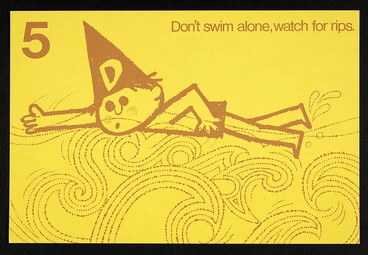
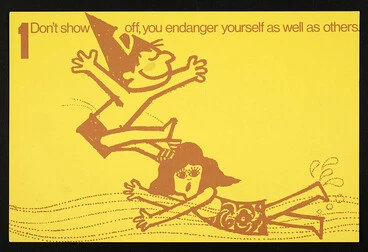
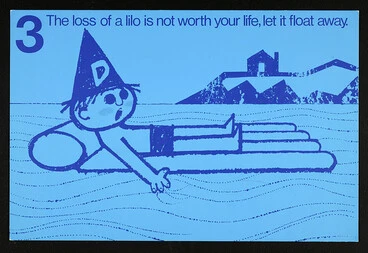
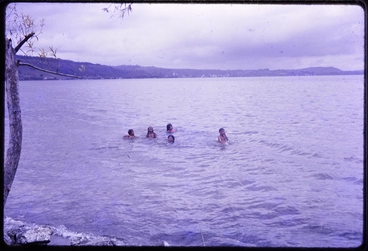
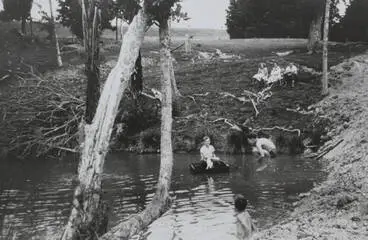
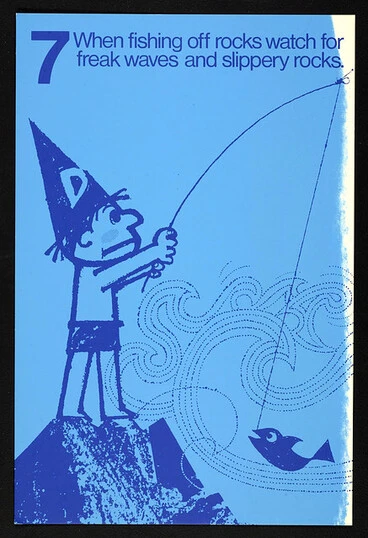

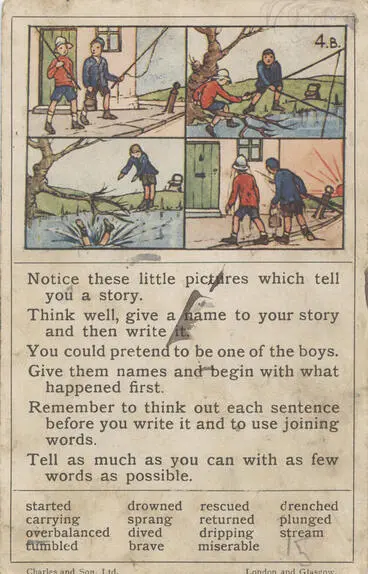
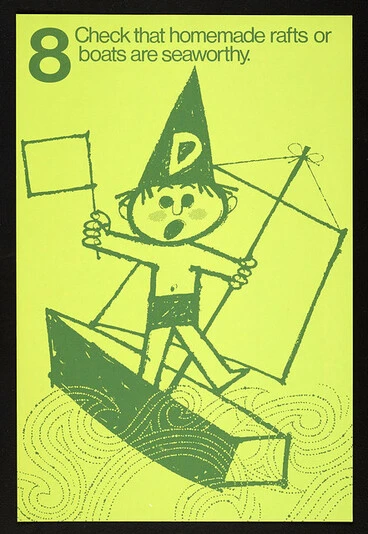

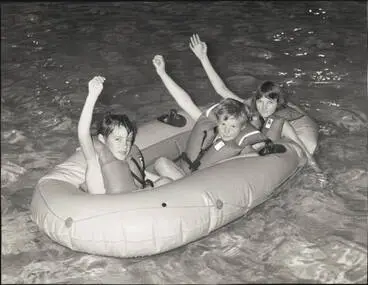
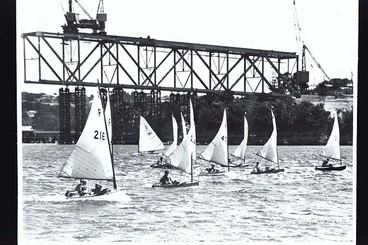

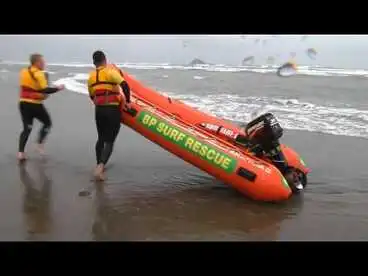
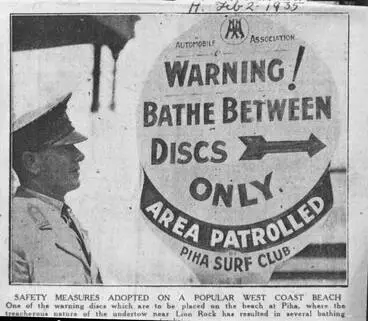

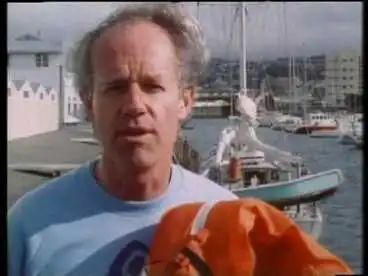
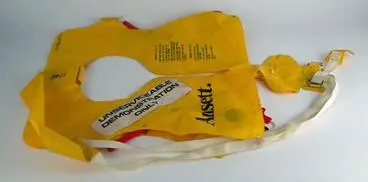



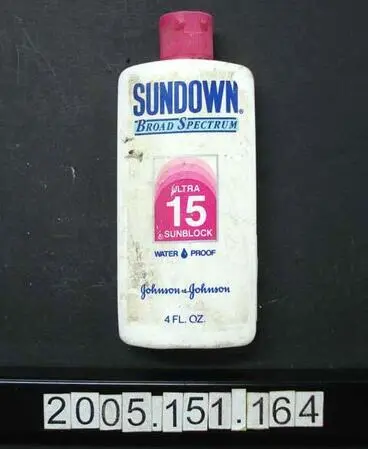
![Rescue breathing start at once! [poster] Image: Rescue breathing start at once! [poster]](https://thumbnailer.digitalnz.org/?resize=770x&src=https%3A%2F%2Fcollection.pukeariki.com%2Frecords%2Fimages%2Flarge%2F81666%2F66cb8cb0b01bfb3f0c1bf6fb7516d8dea40513db.jpg&resize=368%253E)
